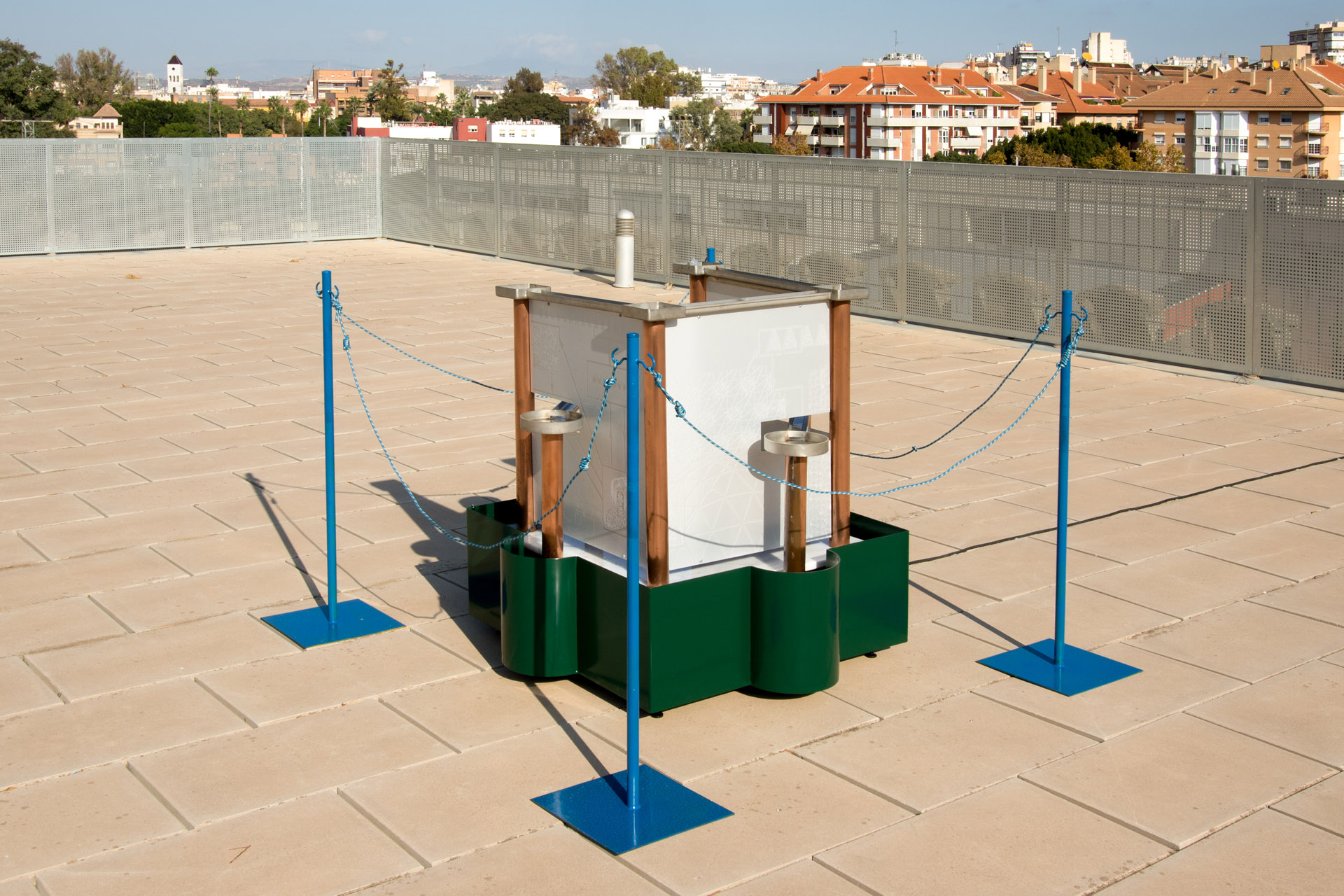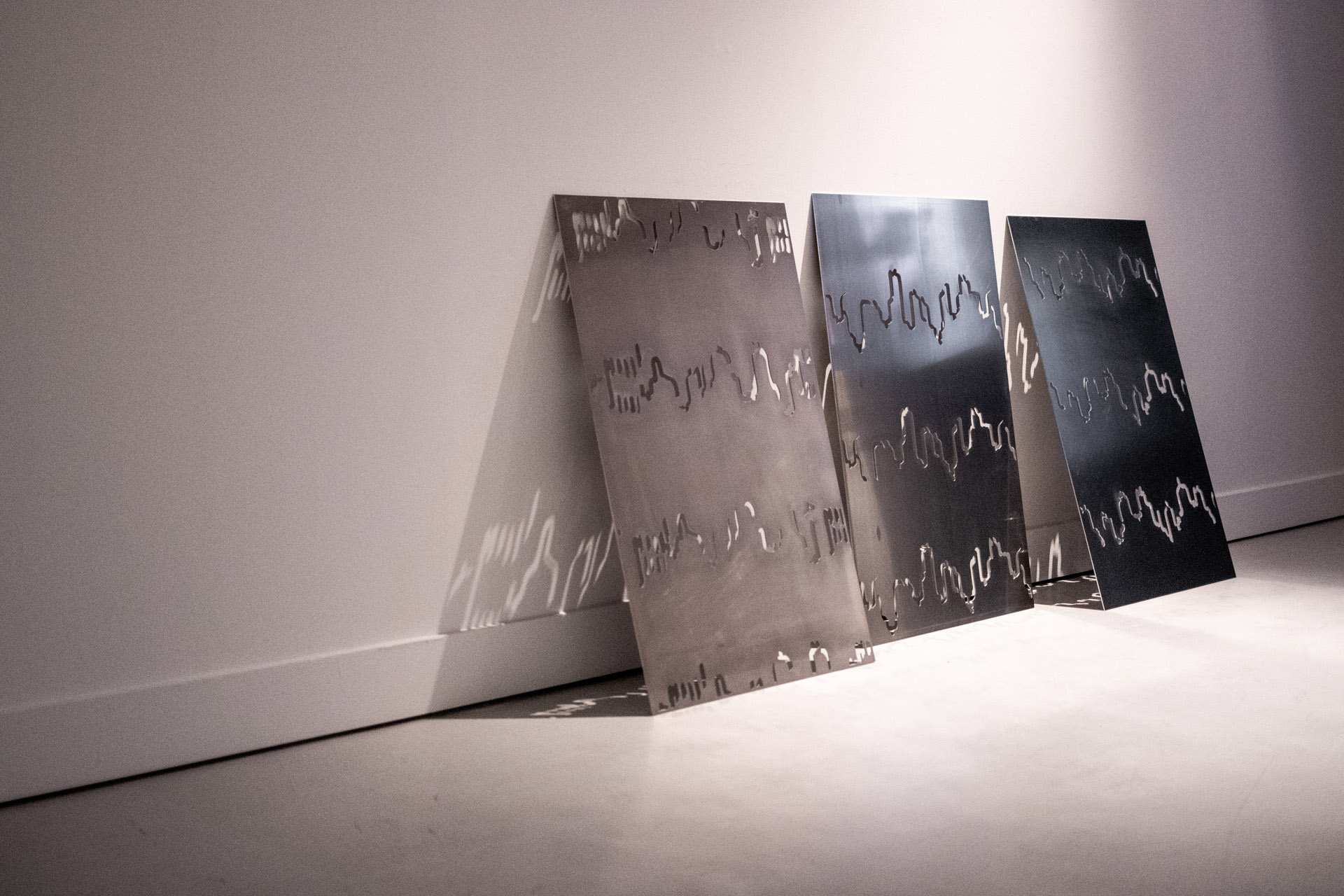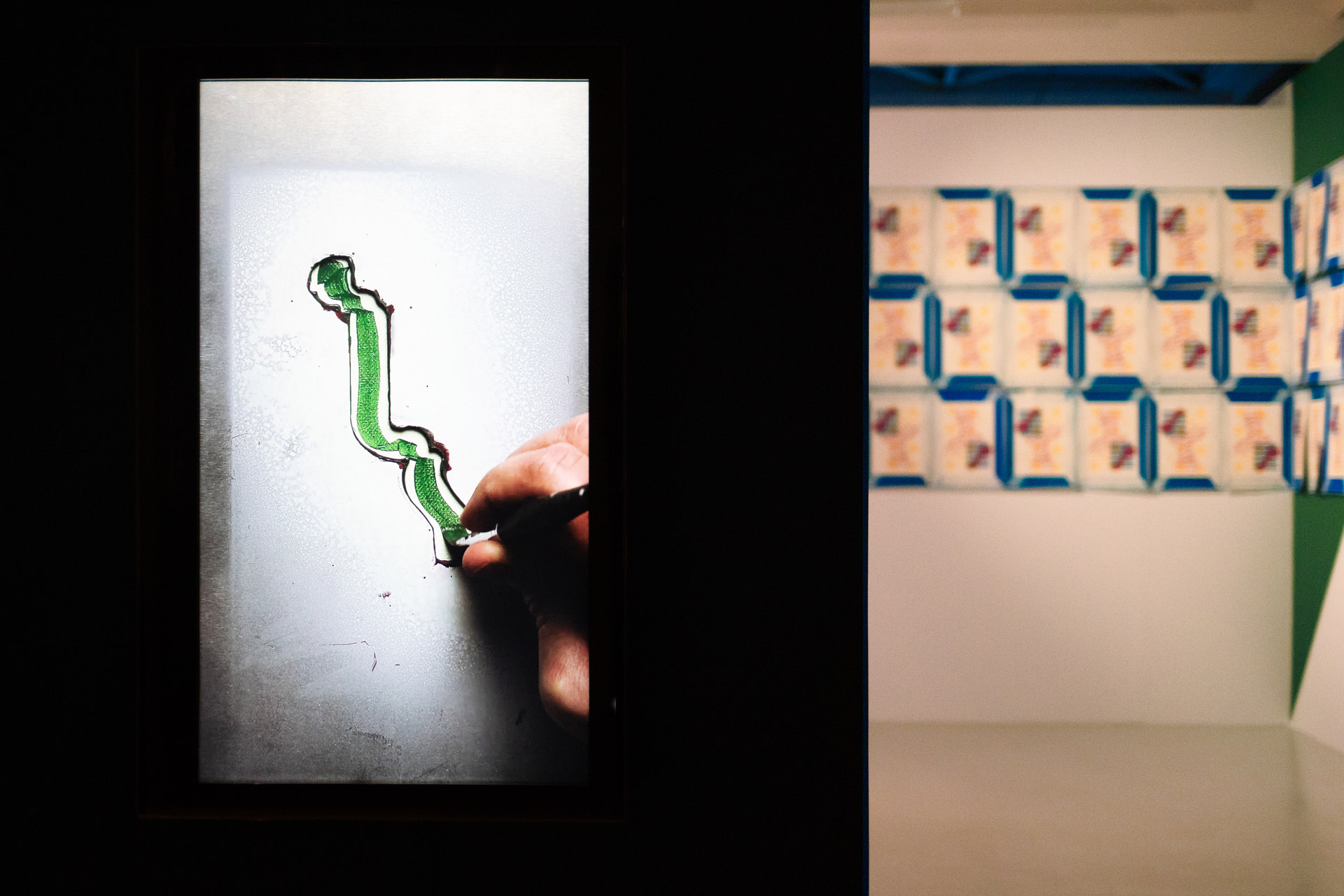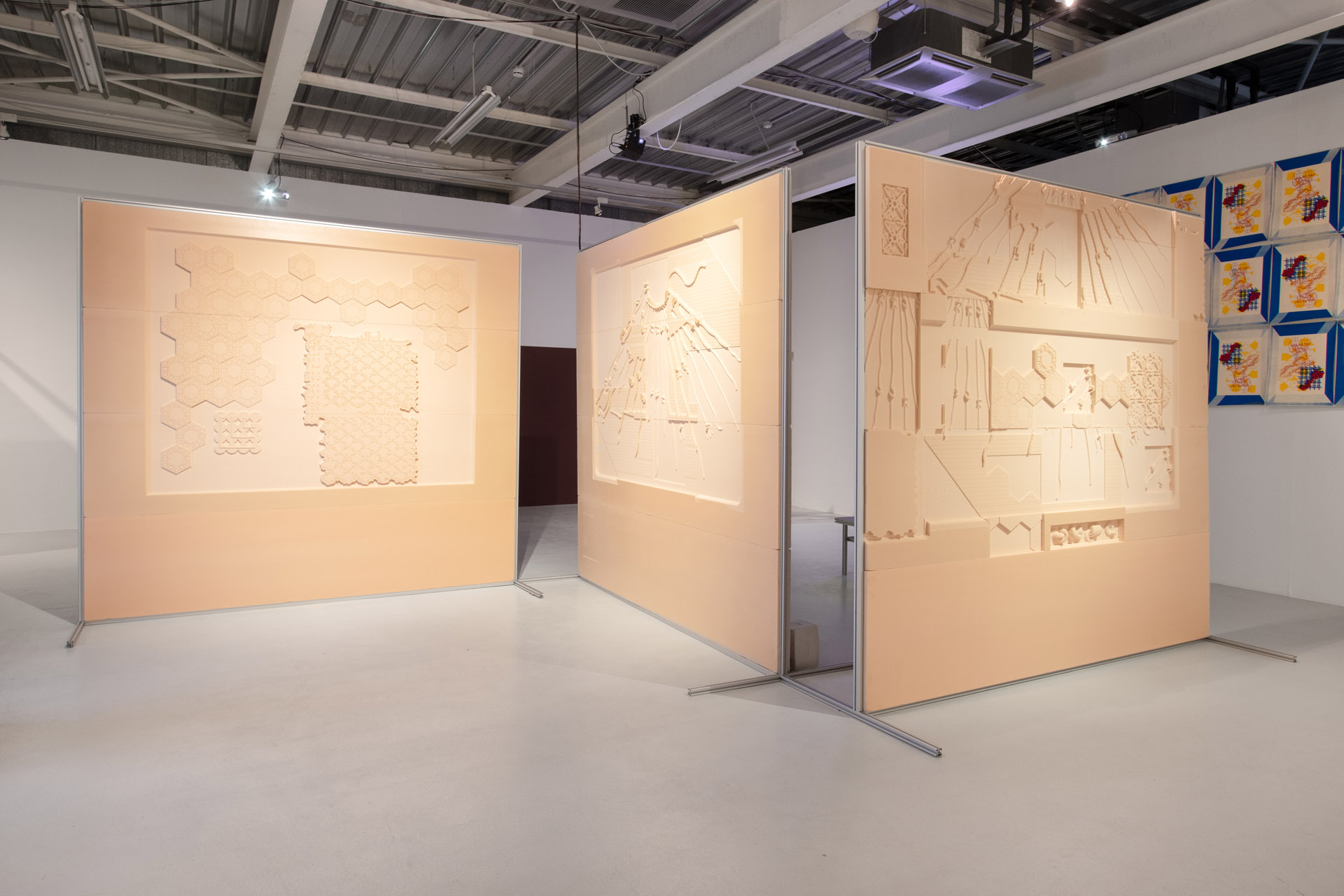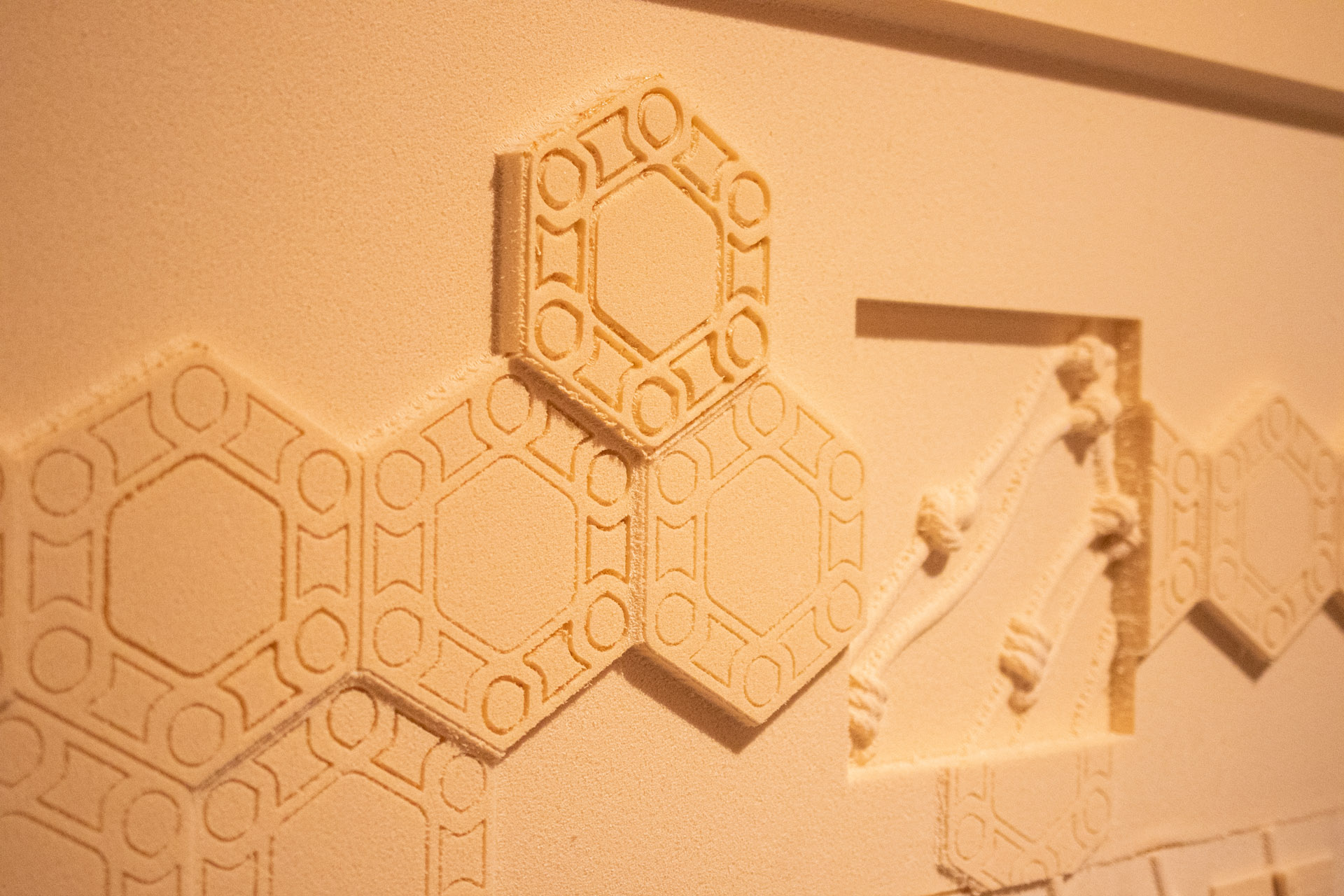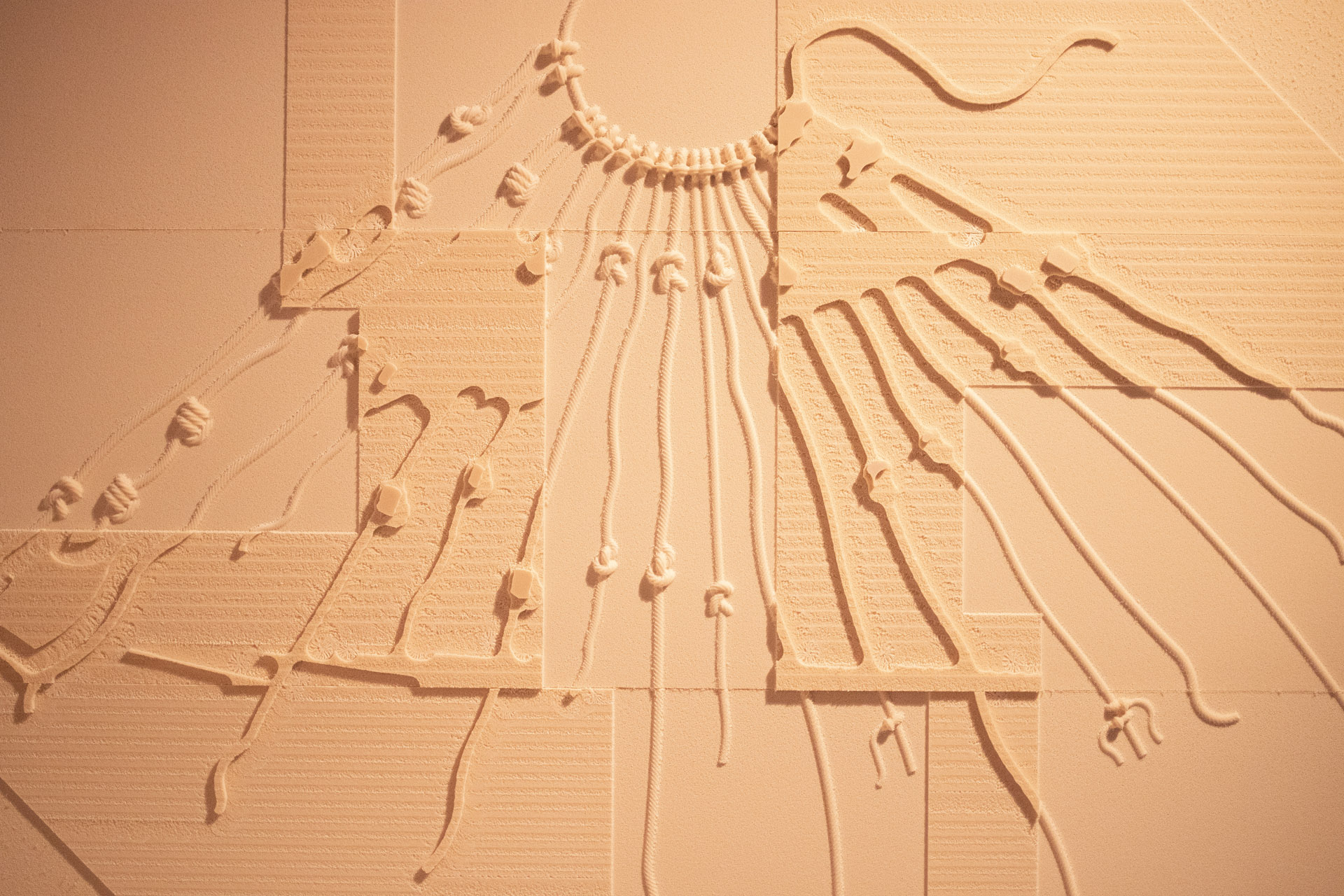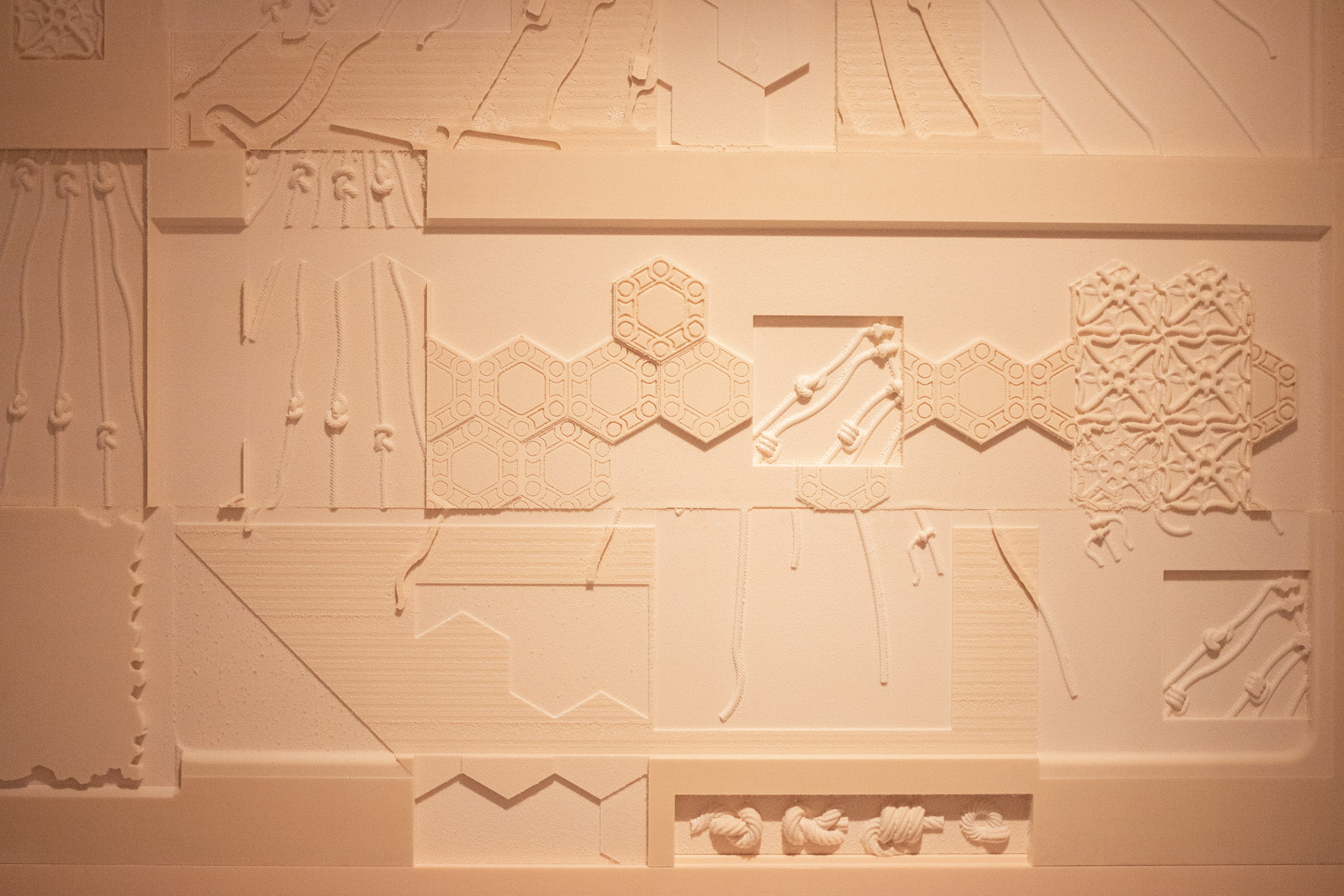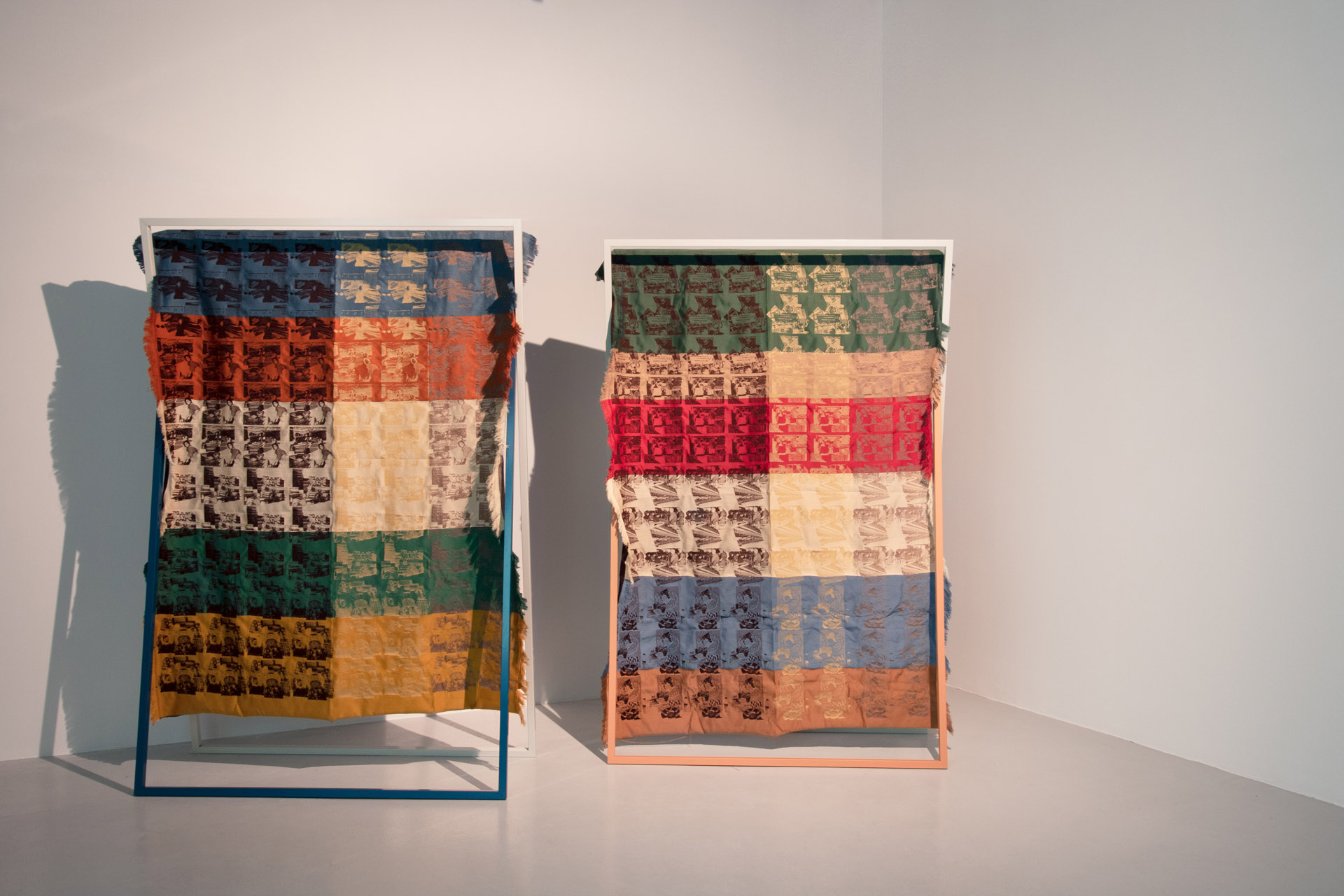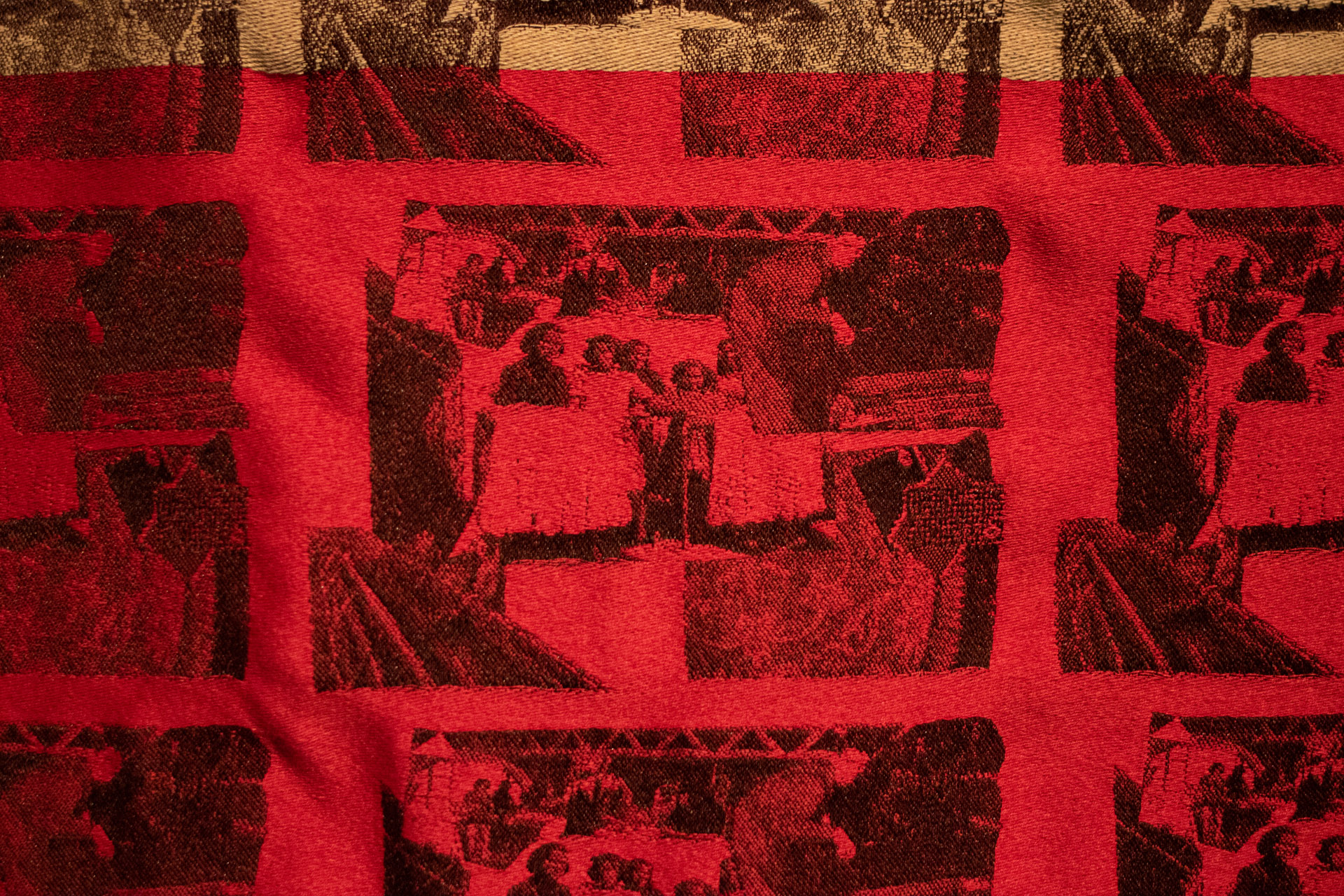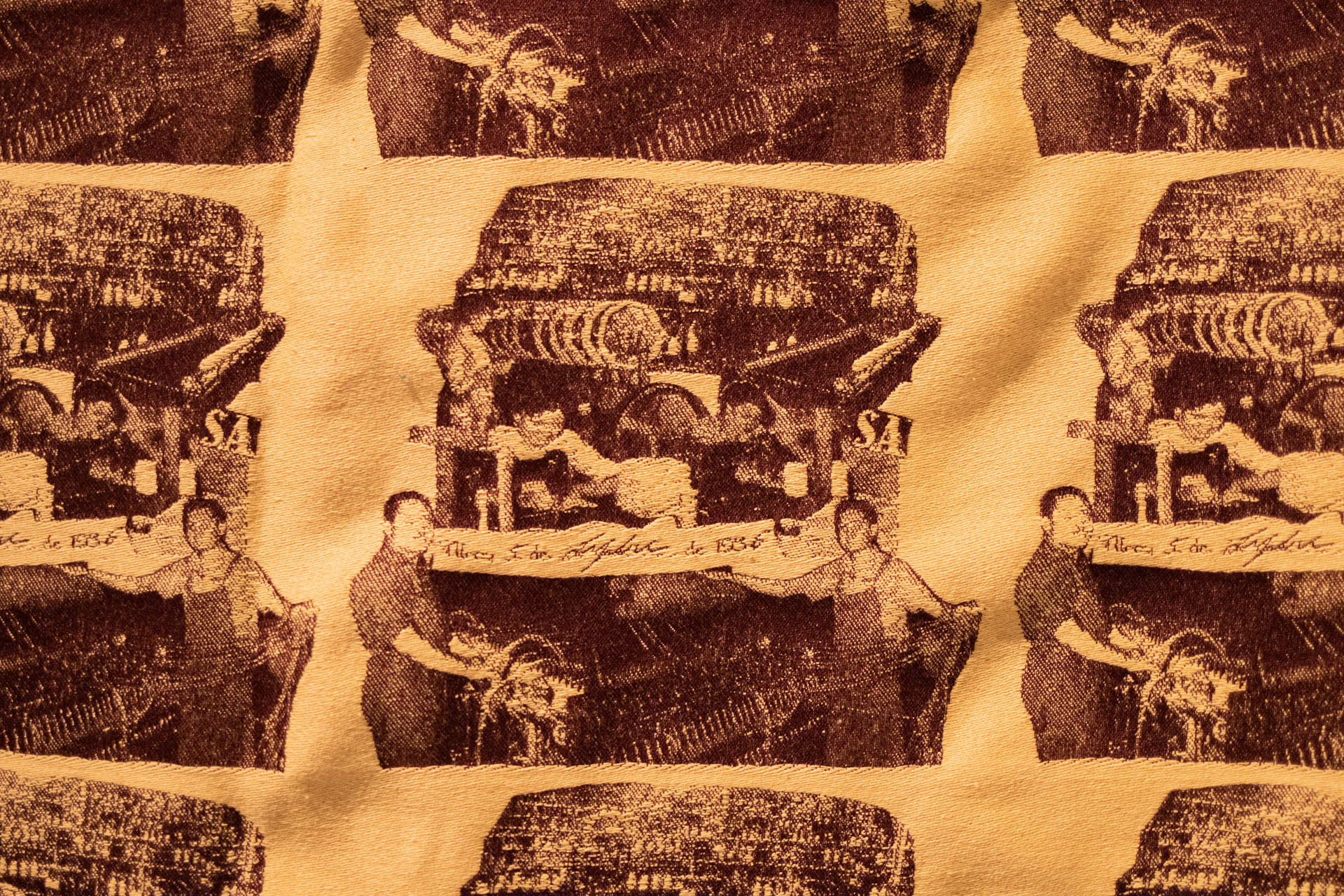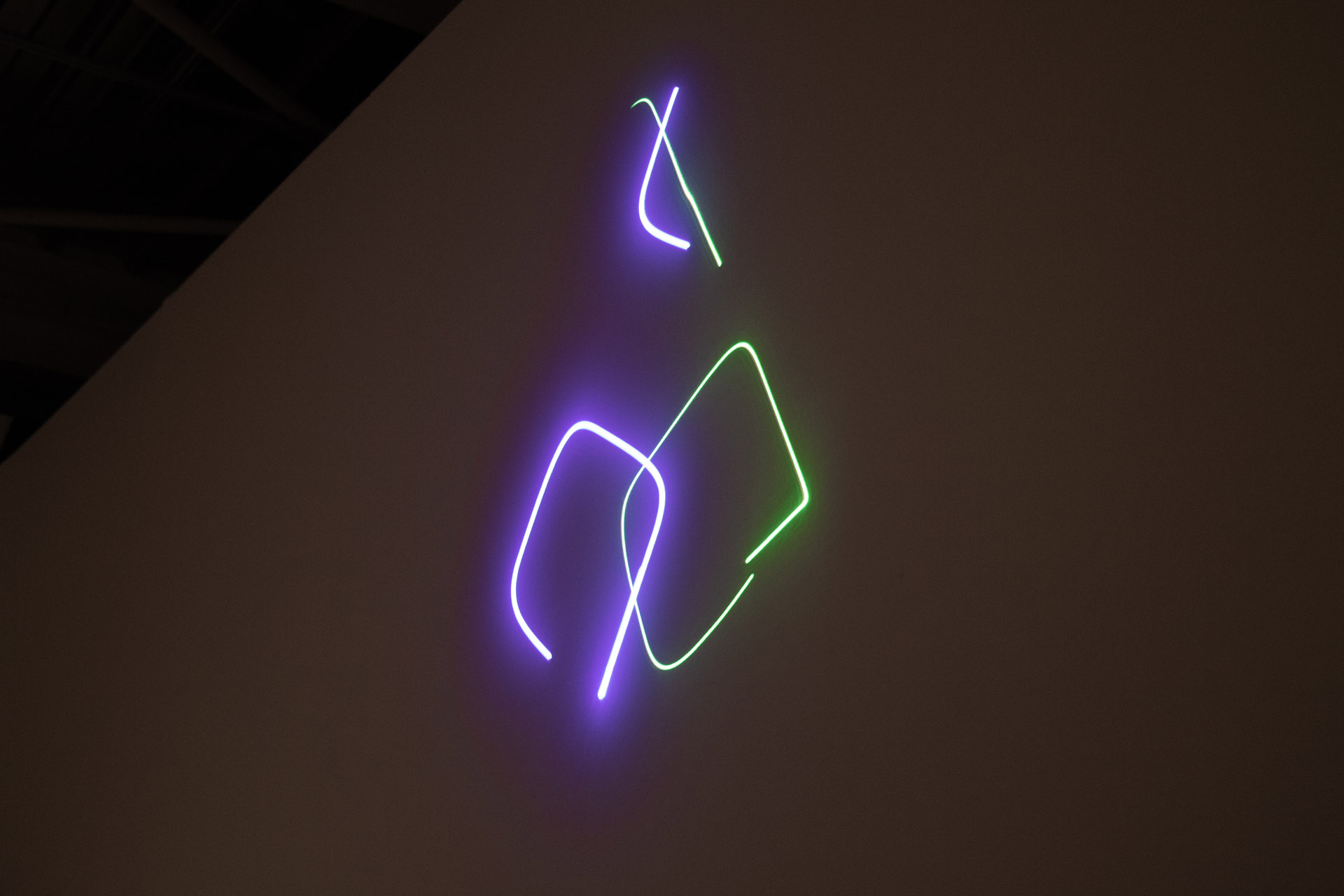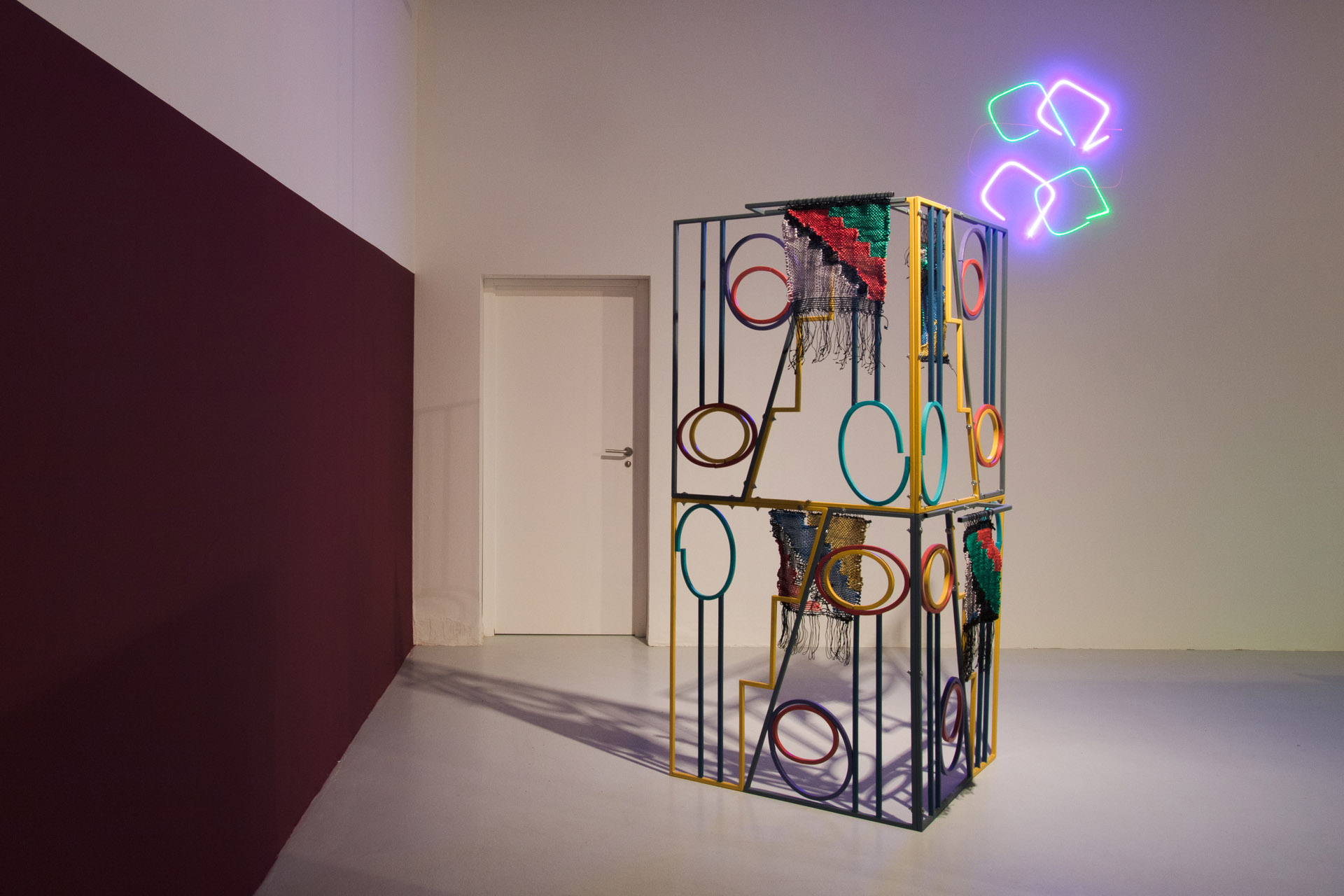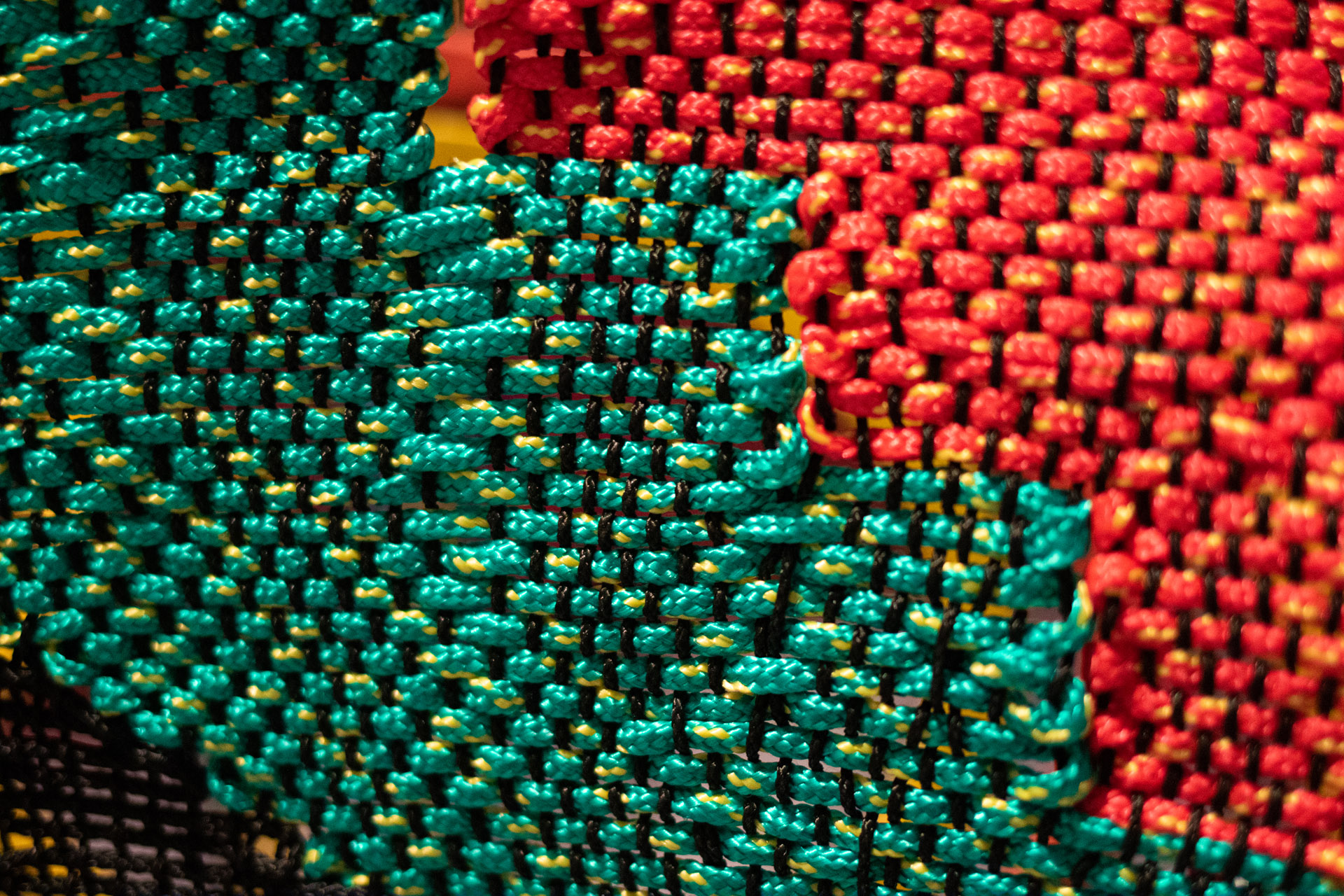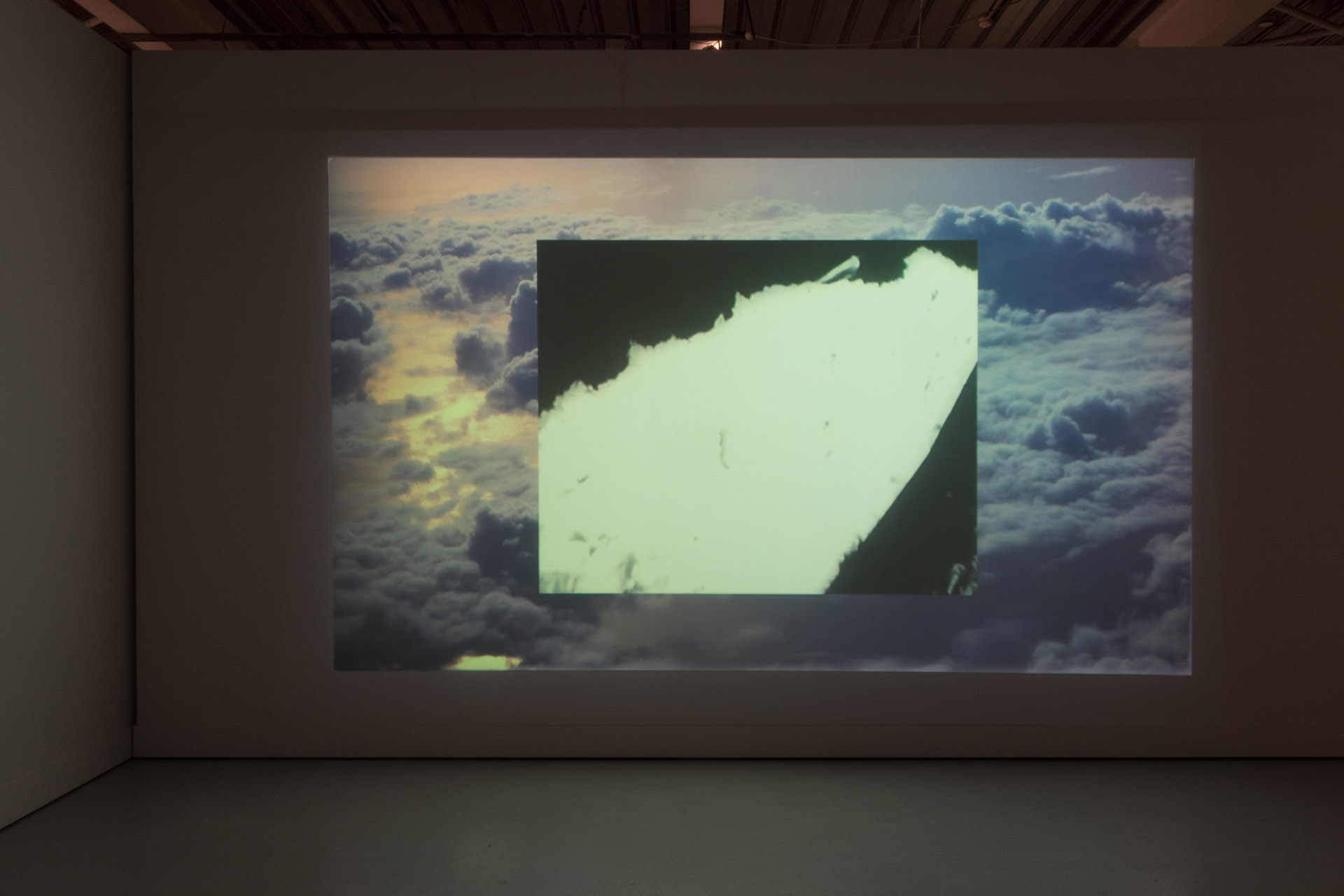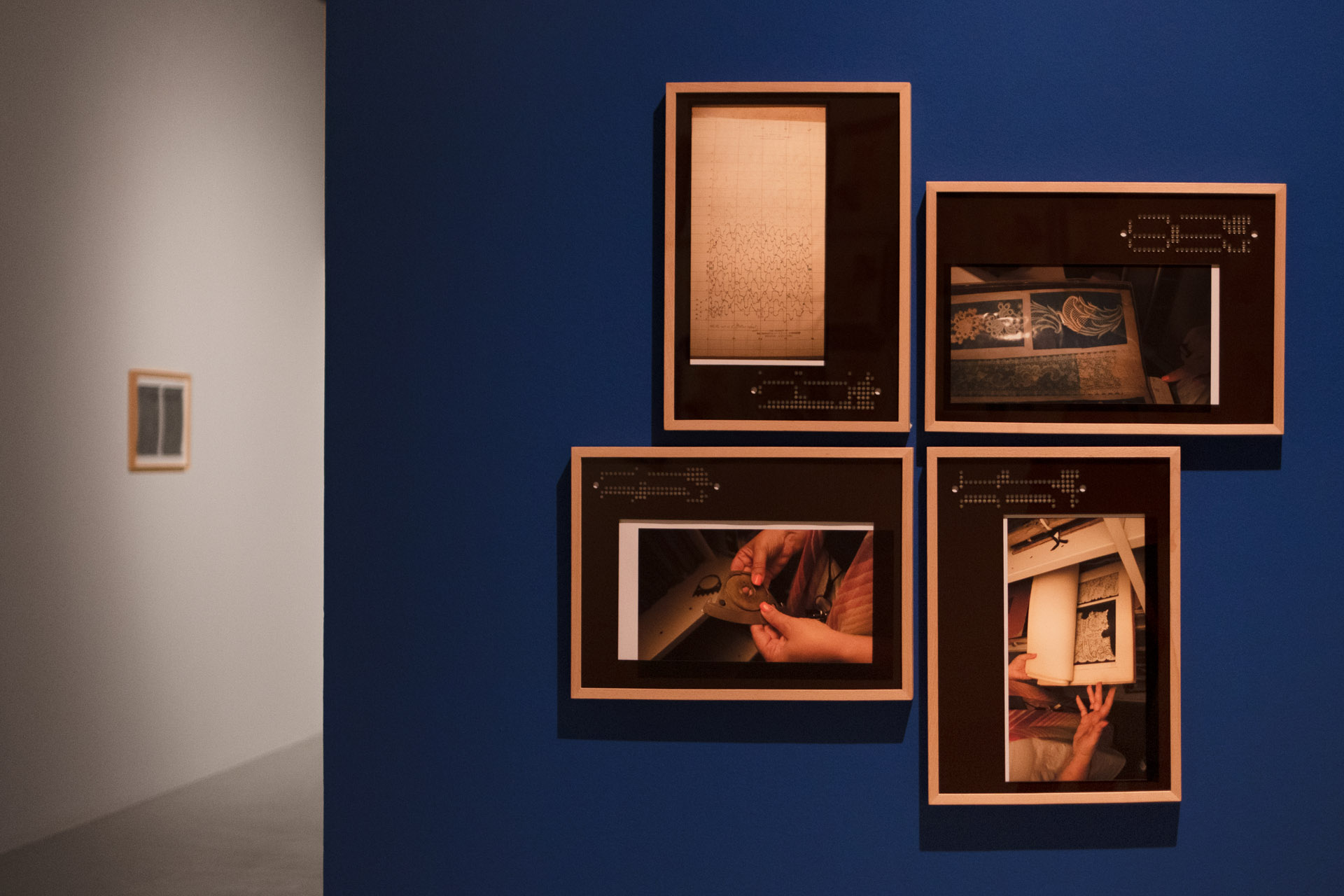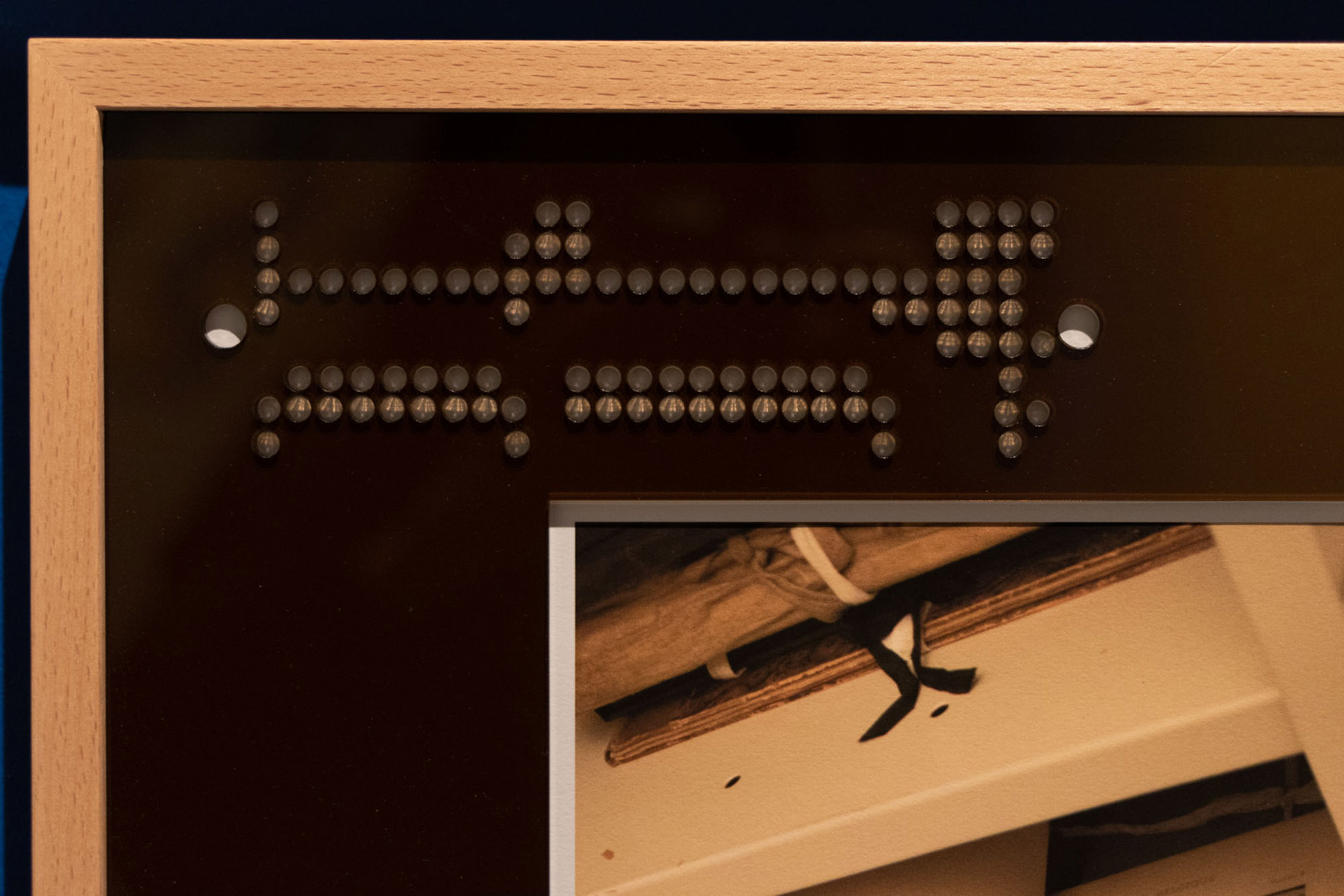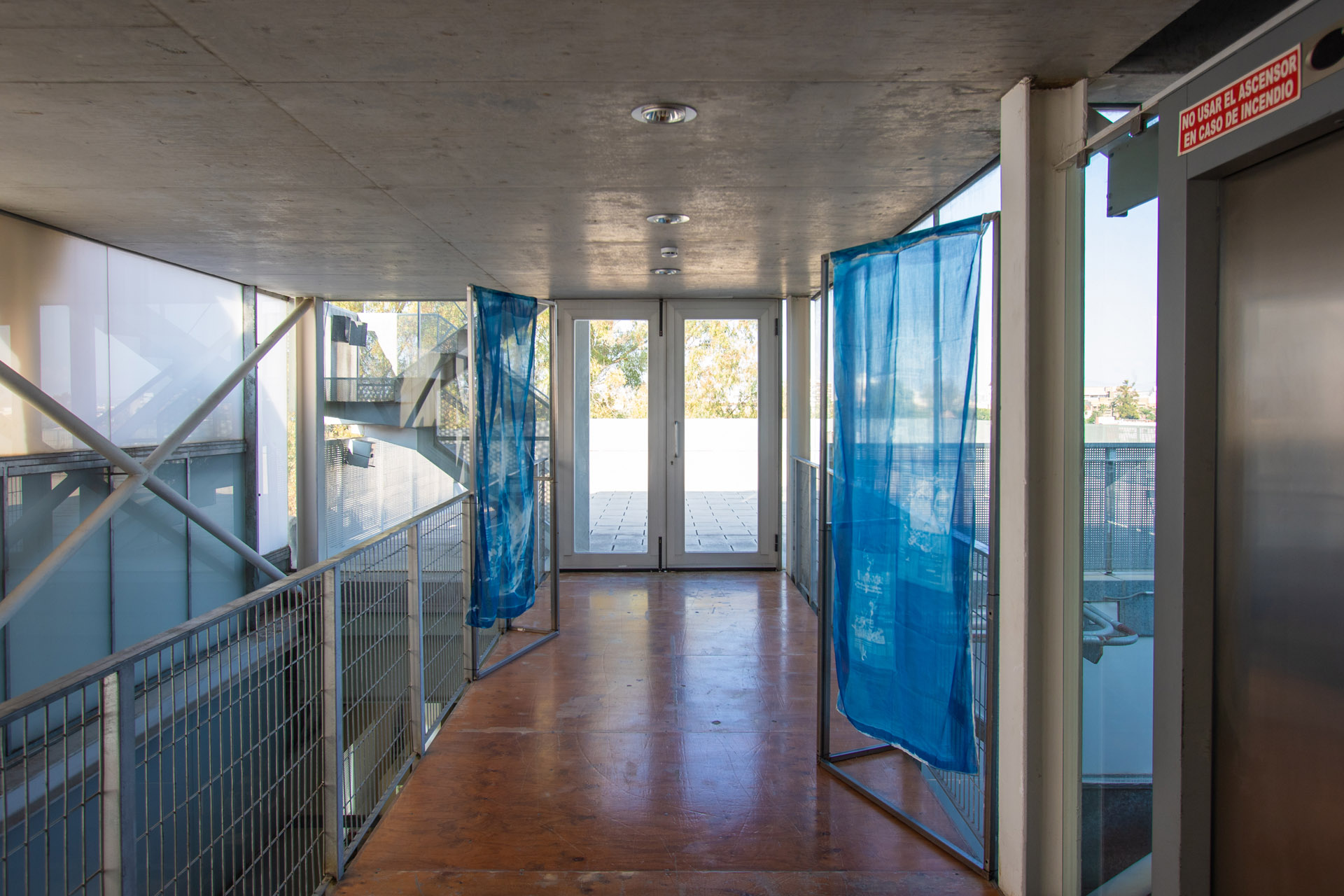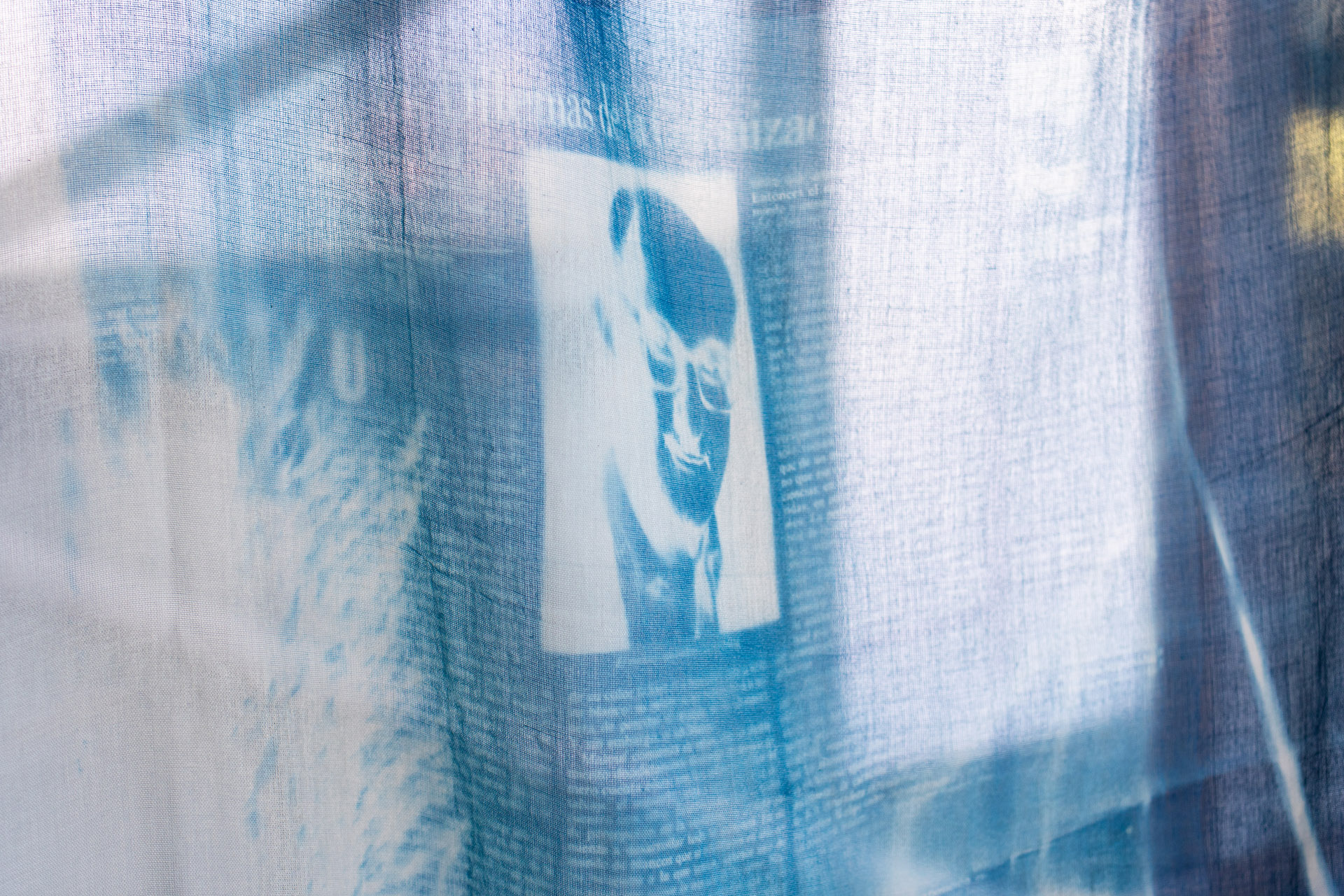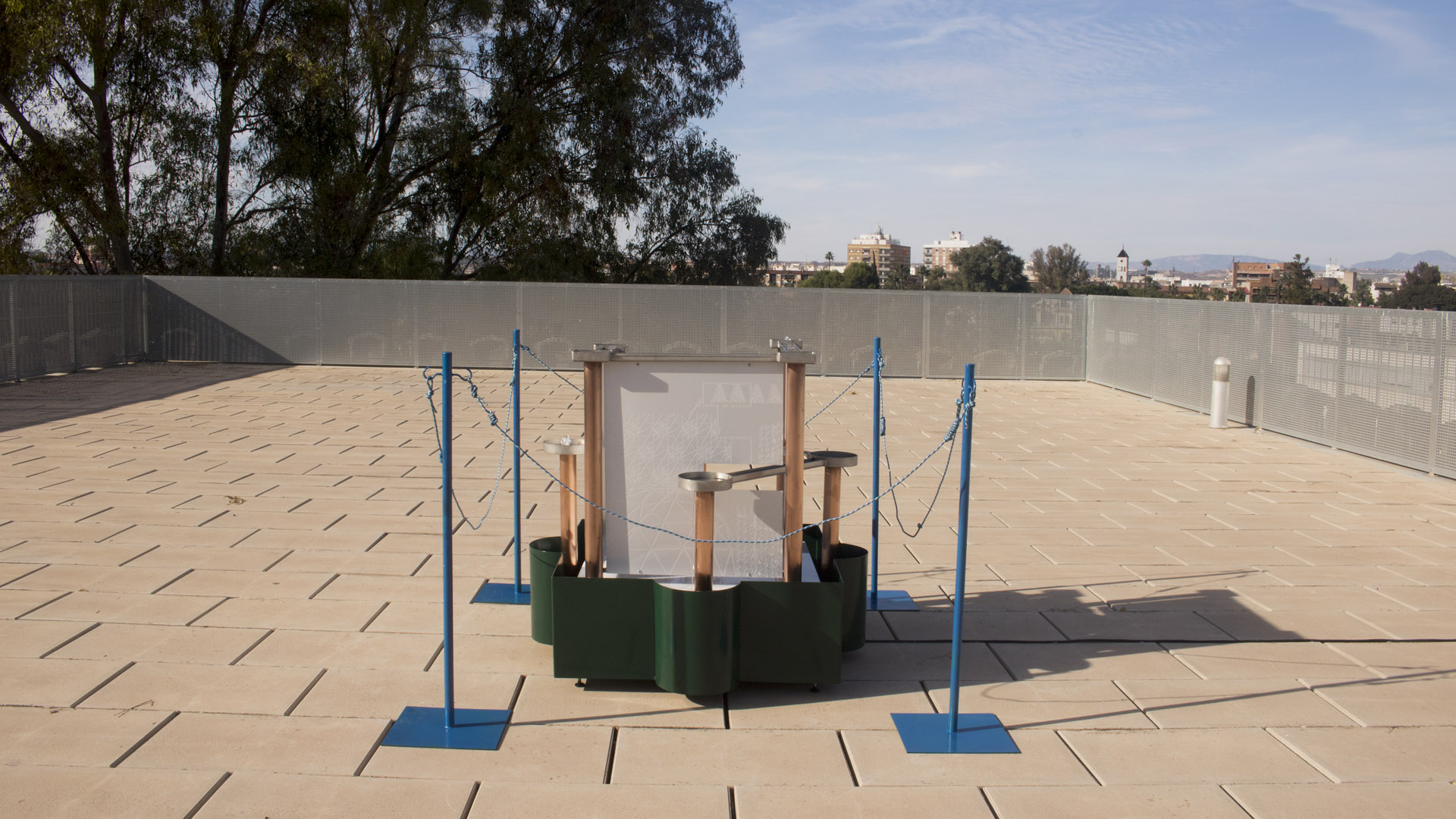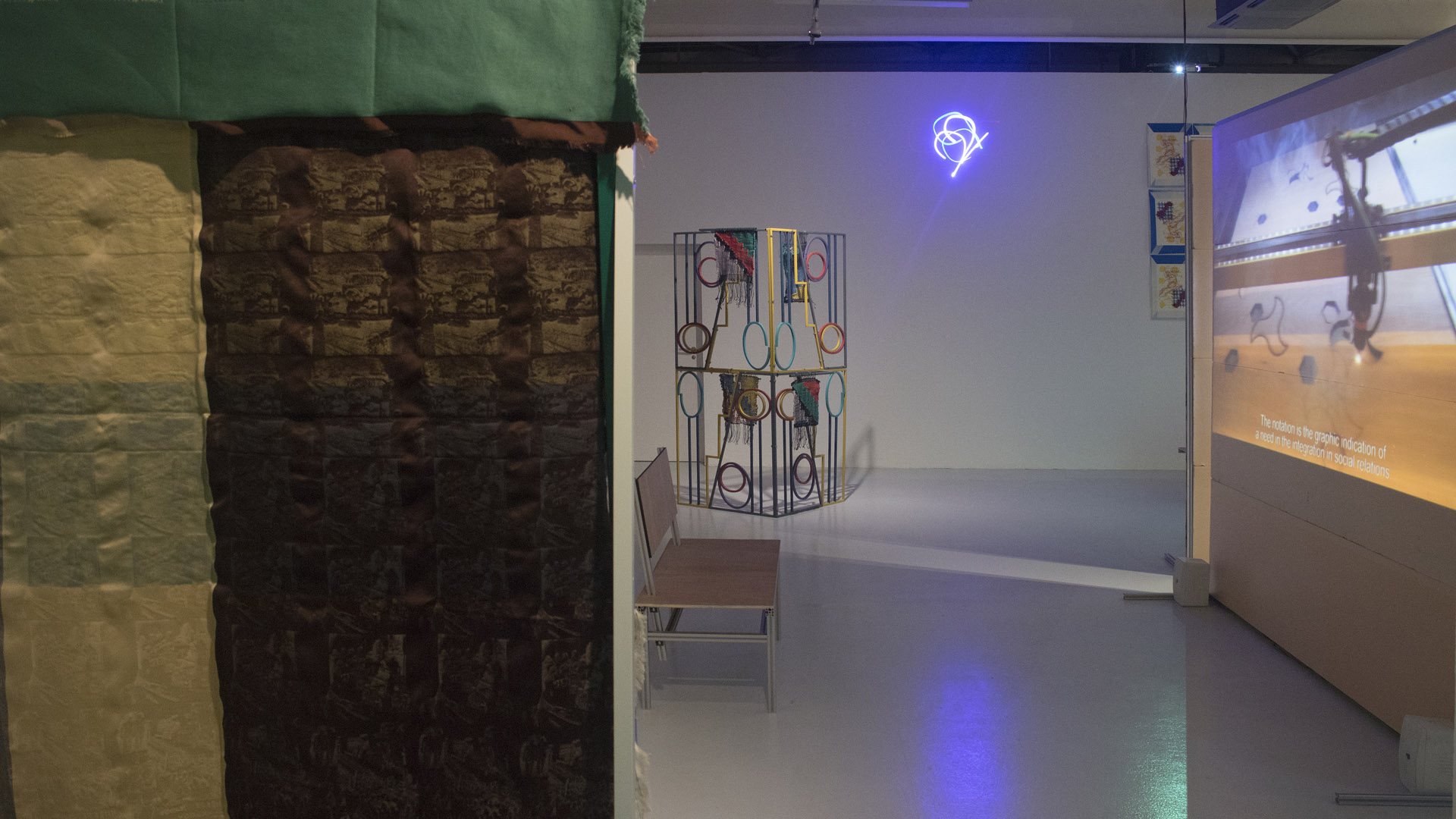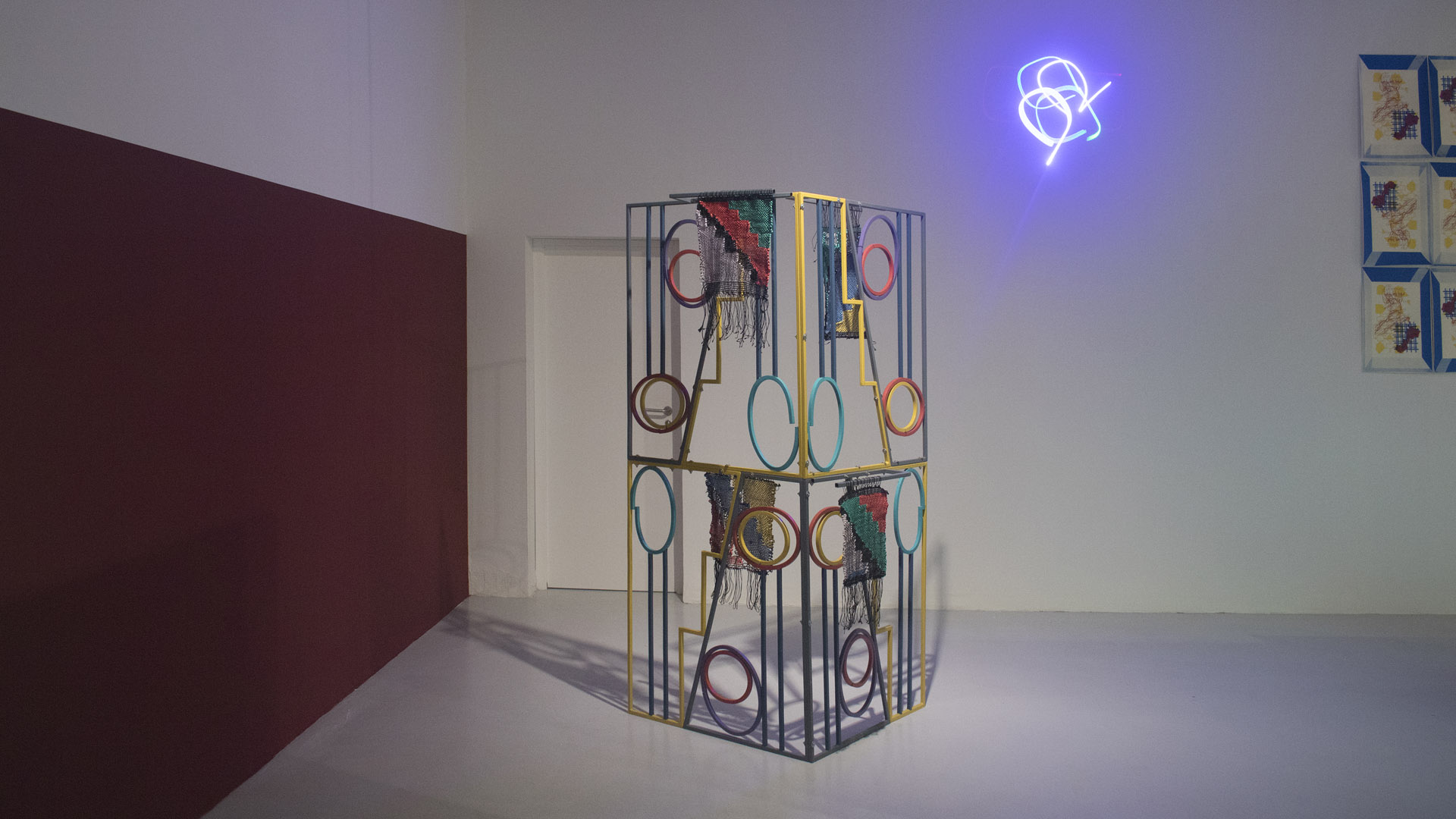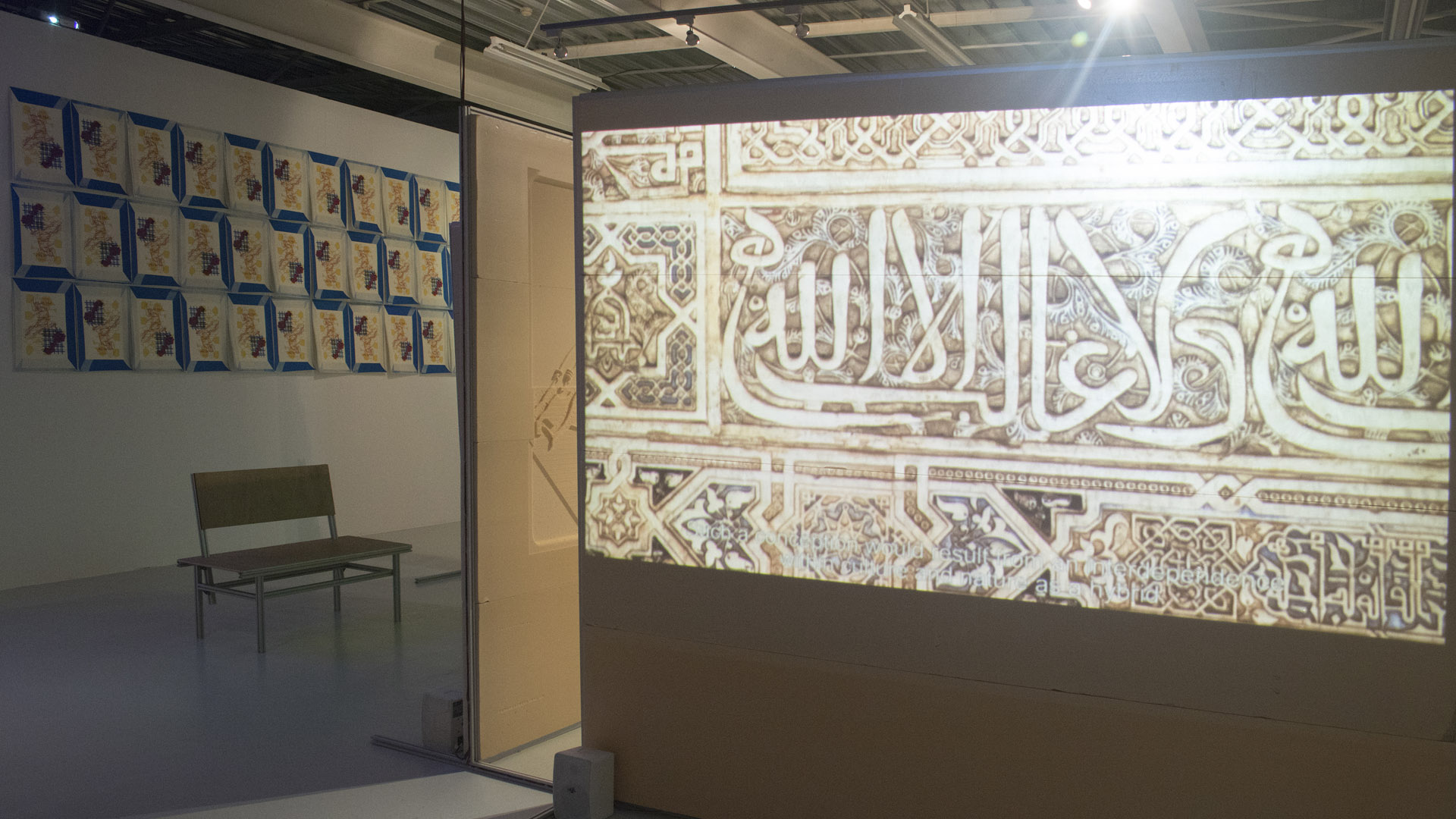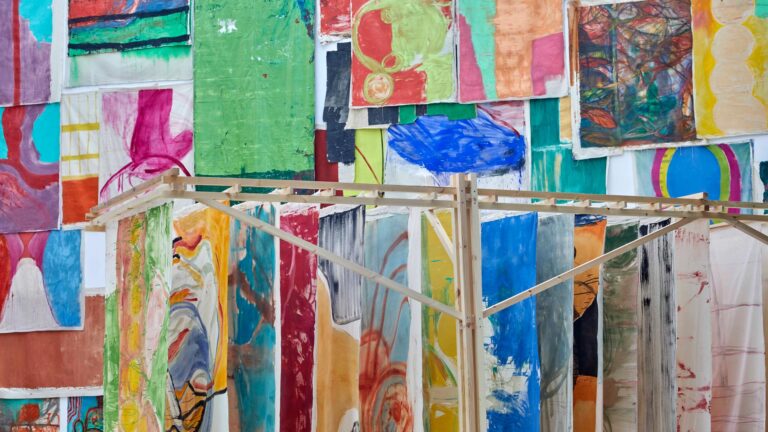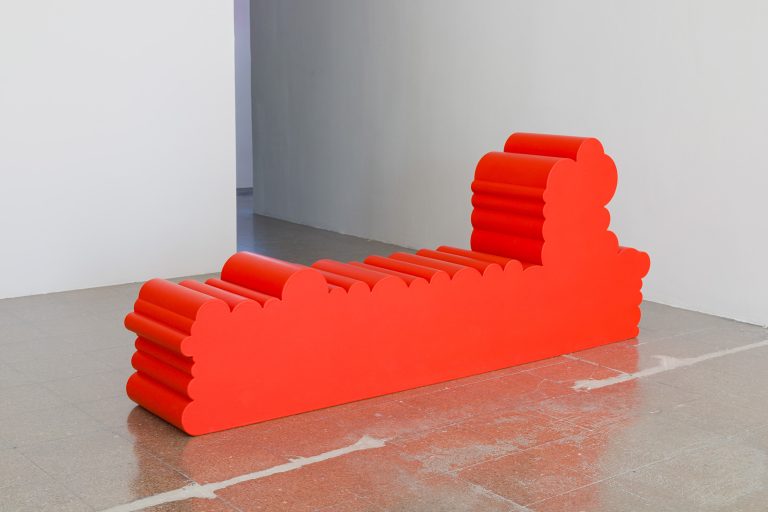Artist: Lorenzo Sandoval
Exhibition title: Shadow Writings
Curated by: Emanuele Guidi
Venue: Centro Párraga, Murcia, Spain
Date: November 12, 2020 – January 5, 2021
Photography: all images copyright and courtesy of the artist and Centro Párraga, Murcia
Two Takes on Shadow Writings by Lorenzo Sandoval
Emanuele Guidi
TAKE 1 – the press release
Yet how to begin?
How to show
The living together of men
That it may be understood
And become a world that can be mastered?
How to reveal not only yourselves and others
Floundering in the net
But also make clear how the net of fate
Is knotted and cast,
Cast and knotted by men?
Bertold Brecht,
An address to Danish worker actors on the art of observation,
translated by John Berger and Anya Rostock
Shadow Writing is the overarching title of the research project by Lorenzo Sandoval that deals with the seductive, retinal and viscous dimensions of the screen-based, image-driven condition permeating every aspect of our extreme present. It ambitiously breaks through this surface to delve into the textures and patterns of the deep-time relationship between human beings, nature, episteme, and techne.
The title Shadow Writing emerges from the technique of sciagraphy (from the Greek skiagraphia, skia- ‘shadow’, -graphia ‘writing’ ) at the basis of the studies by Henry Fox Talbot that brought him to develop in 1853 the first photographic negatives to fix an image on paper. For the first tests Talbot employed pieces of laceworks making out of them, potentially, a document.
Hence, if the title reveals the artist’s intention to trace back possible origins of the reproduction processes from which images circulation, as we know it, sparked; likewise, it carries along a critique to the act of writing itself as ‘shadowy’ technology of power within the unbalanced process of constructing History.
It is by following this twofold plan that Lorenzo Sandoval draws his plot lines as an inventive genealogist who never hides his hands. In these terms, a complex pattern of figures is inserted as load-bearing knots within the infra-structure of ‘progress’ so far arrogated by a western (masculine) narrative. Among them; Ada Lovelace (and her role in history of algorithm and programming), Anna Atkins (who printed the actual first photographic book in 1843), Muḥammad ibn Mūsā al-Khwārizm (who invented Algebra in IX Century and the term Algorithm derives from his name), Pyotr Kropotkin (anarcho-communist, philosopher and biologist whose work was at the intersection of proletarian, slave and women emancipation), Felipe Huaman Poma (author of The First New Chronicle and Good Government, both an historical account of the Andes civilization and a denounce against Spanish colonial power).
Furthermore, the research let emerge how the development of computation and computing engines, as well as the ‘industrialization’ of photographic reproduction are tied together with the advancement of textile and weaving technologies – spanning from the Incas Quipus, Arab architecture to the Jacquard loom machines – so as to propose parallel and divergent genealogies of mathematics, science and technology.
Started in 2017 and still ongoing, Shadow writing unfolds through about ten chapters that are not understood as concluded but ‘in-motion’ narratives; building upon, responding and complementing each other; inclined to be reconfigured and written further through possible new associations and media assemblages.
The exhibition at the Centro Párraga is, so far, the most complete attempt to bring these various parts together in one of the many possible configurations, selecting and combining parts or whole chapters to offer one – hopefully many more – possible reading and path through Lorenzo Sandoval’s multi-layered research.
TAKE 2 – Writing (with Shadows)
The problem is how to begin,
how to narrate the beginning,
and where to situate that beginning.
Lorenzo Sandoval
Shadow Writing
(Algoritmo/Quipu)
There are three possible directions one can follow on reaching the floor assigned to Lorenzo Sandoval’s solo exhibition Shadow Writing at Centro Párraga: three directions that open towards possible ways of reading the exhibition itself. That is not to say three completely different ways, because “after all, all histories are subtly intertwined”.
Yet “the problem is where to start”, which is the question one asks oneself every time a text has to be written or an exhibition organized.
And as I continue to quote Sandoval’s own words, I am putting off beginning the second chapter of this text, in the hope that by doing so I can, with any luck, dilute that “selfishness” he ascribes to the very act of beginning anything: “Maybe it’s complicated because beginnings are always selfish”, as Sandoval says.
And this might be the way to understand the simple gesture of creating multiple ways of entering the show: exhibitions — like texts and documents — are machines that Lorenzo Sandoval uses to make possible variations of histories visible: “Thinking about where a story begins inevitably changes who is part of that story, how the story is recounted, and who counts in that story.”
We might regard this gesture as a device to foster a proliferation of beginnings that inevitably affect all the rest of this story. Or a spatial translation to question and resist a certain linearity we are educated to expect. “A word once written risks becoming linear”, writes artist and poet Cecilia Vicuña in her poem Word and Thread.[1] It is a risk that also applies to time and space, both of which are inherent conditions of exhibition-making and of the politics of display.
Lorenzo Sandoval is well aware of the risks that a linear narrative involves, and his projects aim at escaping these patterns, established by “modernity”, through which we continue to know and pass on the histories of science, technology and media.
Michel de Certeau maintains that “procedures are not merely the objects of a theory. They organize the very construction of theory itself. Far from being external to theory, or from staying on its doorstep, […] procedures provide a field of operations within which theory is itself produced”.[2] If this is so, then by transposing this understanding to what the Shadow Writing project investigates, we could state that “procedures (also) organize the construction of history” and, even more clearly, “provide that field of operations within which history itself is produced”.
In these terms, this exhibition is an attempt to chart and acknowledge this field of operations that we have learned to follow unconsciously and uncritically, because it is a human propensity to follow the easier path; ultimately, “algorithms are simply a set of step by step instructions, to be carried out quite mechanically, so as to achieve some desired result”.[3] But Franco Berardi Bifo reminds us that “in a letter to the semiologist Thomas Seboek, Bill Gates says that power is making things easy. I want to highlight this concept: power is making things easy”.[4]
Hence, we seem to find ourselves at some point within a history conjured by powers which, while making things easier, hide, leave behind or simply cancel those perspectives and protagonists that do not fit into their narrative. And the process that Lorenzo Sandoval activates it is not destructive or abolitionist in its approach: it is reparative and propositional.
Aware of the impossibility of completely undoing the habitus that modernity has designed for us, Sandoval asks us to learn how to “wear” it more consciously: by following and retracing the procedures that produced it and then starting to loosen its links and enlarge its .
This might be the way to look at the artist’s own hand in Training Protocol, which I (as invited curator) suggested offering to the audience as a first encounter. The artist’s hand is made visible in — that is, responsible for —the fiction that this exhibition represents. “The past is the fiction of the present”, to quote de again, and through this very exhibition the visitor is confronted with all the procedures, patterns and protocols that Sandoval is well aware of and that contribute to the fiction that every narrative inevitably constitutes: “What we initially call history is nothing more than narrative”.[5] He wants to acknowledge this reciprocity as part of his practice, both as an artist and as an exhibition-maker:
In history everything begins with the gesture of setting aside, of putting together, of transforming certain classified objects into “documents”. This new cultural distribution is the first task. In reality it consists in producing such documents by dint of copying, transcribing, or photographing these objects, simultaneously changing their locus and status.[6]
Every choice Lorenzo Sandoval makes during the research process or the design of the exhibition resonates with this statement. He embraces and, above all, shares the responsibility of the “Institution” (be it the museum or the archive) in transforming objects into “documents”. There is not enough space here to name what those objects might be for the artist, as the exhibition is filled with all kinds of materials, forms and traces of the production process (knots and ropes, CNC-cut panels, modular systems, printed and woven textiles, and so on). But what is important to underline in his practice is that by “maximizing” the meaning and message of these objects to bend them to his narrative (fiction), he is able to reveal the politics and ideologies that have framed them up till now. So while capitalizing on and enhancing the power of the Institution to validate documents, that is, a certain narrative of history, Sandoval is able to make these documents public through their “variational status”. In the words of artist and researcher Riccardo Giacconi: “Variational documents are narrative artifacts that do not claim an official, validated and certified link to any truth (unlike legal evidence), but which exist as variations on a truth that is inaccessible, and therefore unprovable. Unlike standard documents, a variational document performs its narrative and relational function without excluding other possible variations, without proposing itself as the official bearer of a single truth. Variational documents act outside validation procedures of enforcing institutions of power.[7]”
To go back to the “beginning” and to Training Protocol, what one sees is the artist’s hand in the continuous action of drawing a sinuous organic sign, following the design of a metal stencil: it is a body technique that looks like an ancient technology but is at the same time extremely present in its desire to retrace a history of image-making in the “age of mechanical reproduction”; in Benjaminian terms we might say that it compresses time and breaks its linear development.
With this gesture Lorenzo Sandoval reproduces a fragment of a drawing used for the design of punch cards employed to program the operations of Jacquard looms. Calligraphic in its style, it is both an alphabet and a decoration that the artist rehearses and rehearses to learn how to inhabit a machinic procedure.
The weaver sees her fibre as the poet sees her word.[8]
Writing and weaving are performed as repetitive Fordist movements, yet they show variations at every step of the process.
The weaver is both weaving and writing a text
that the community can read.[9]
We are confronted with a beginning. Many possible beginnings. But the larger, conclusive story is never shown in its wholeness, because it is written in the making.
A word carries another word as thread searches for thread.[10]
[1] Cecilia Vicuña, Palabra e Hilo/Word & Thread, trans. Rosa Alcalá (Edinburgh: Morning Star Publications, 1996).
[2] Michel de Certeau, Heterologies: Discourse on the Other, trans. Brian Massumi (Minneapolis: University of Minnesota Press, 1986), 192; cited in Ian Buchanan, “Writing the Wrongs of History: De Certeau and Post-Colonialism“, SPAN: Journal of the South Pacific Association for Commonwealth Literature and Language Studies, 33 (1992): 39–46.
[3] Jean-Luc Chabert, “Introduction”, in A History of Algorithms: From the Pebble to the Microchip, ed. Jean-Luc Chabert, trans. Chris Weeks (Berlin: Springer, 1999), 1; cited in Matteo Pasquinelli, “Three Thousand Years of Algorithmic Rituals: The Emergence of AI from the Computation of Space”, e-flux Journal, 101 (June 2019).
[4] Franco Berardi Bifo, “Automation and Infinity of Language: Poetry versus Financial Semiocapital”, in Rehearsing Collectivity: Choreography Beyond Dance, ed. Elena Basteri, Emanuele Guidi and Elisa Ricci (Berlin: argobooks, 2012), 37.
[5] Michel de Certeau, The Writing of History, trans. Tom Conley (New York: Columbia University Press, 1988), cited in Buchanan, “Writing the Wrongs of History”.
[6] Michel de Certeau, ibid.
[7] Riccardo Giacconi, “The Variational Mode: Three Cases about Documents, Artworks and Animation” (doctoral thesis, University of Leiden, 2019), 191.
[8] Cecilia Vicuña, Palabra e Hilo/Word & Thread.
[9] Ibid.
[10] Ibid

